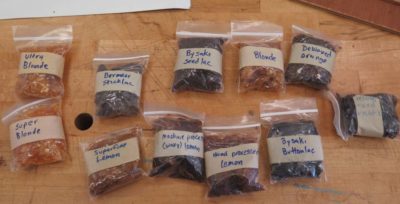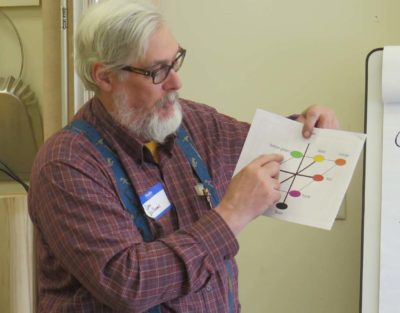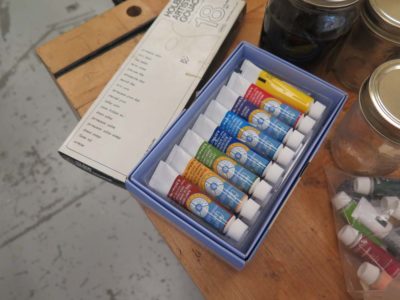Matching Appearance
For the final session of the SAPFM Tidewater Chapter Spring Meeting I was asked to talk about “matching color” but I took the liberty of broadening the topic to “matching appearance” which I think is more useful. Though my demonstration component did indeed focus on understanding the perception of color and its modification, it occurred within the larger context of “appearance.” Normally this is a topic I like to spend a week covering, so in 90 minutes I barely got to the highlights. In fact, at this fairly late date I have decided to add a full chapter on the topic to my Period Finisher’s Manual book for Lost Art Press.

There are many aspects of appearance of interest to woodfinishing and I addressed each and their interrelation briefly. One point I made repeatedly is that if matching color is a critical component of any projects, that must be accomplished in the finishing layers (or between them), NOT in staining the wood.

Trying to match any color via the manipulation of wood stain on the bare wood surface is a fool’s errand. To get to where you want to go, you must know where you are starting. And that means the wood surface must be sized with enough coating to establish the base appearance and color.

There are times where the selection of the coating itself is a critical component of achieving a specified color.

Once you get to the point of manipulating the coloration, I believe that the traditional color wheel is inadequate to the task. Instead I prefer a different conceptual model for color, and that model is known as the “L,a,b” color system. I will not go into detail here as to how I use this system in my own color work, suffice to say it is functionally a subtractive system i.e., if something is too red, I add green, if it is too yellow I add blue, to neutralize the excess color.

Adding tonality to the surface appearance can be achieved through tinting the coating itself with dyes or pigments. Here I am using some very intense organometallic synthetic dyes that were originally created for industrial and automotive paints, if I recall correctly. These are Orasol dyes and have a somewhat peculiar palette to select from, and are available to the finishing trade at Olde Mill.


The means of imparting coloration are many, and once again I only use color in or in-between the finish. One of the simplest and most effective techniques — and historically accurate to boot — is a light glaze of asphaltum.

And speaking of glazing, I spoke for a few minutes about how to determine whether or not you have good glazing brushes.





Another glazing technique I demonstrated was using artists’ watercolor paints known as goauche with a waterborne shellac binder that I made right there in the meeting. If you do not get the color or tonality correct, just wipe it off with a damp rag and start over again. You have perhaps a half hour to do this before the waterborne shellac sets, and it is very tenacious once dry.
And then it was time for everyone to go home.


As a mountmaker I always am trying to match “appearance” rather than color. I’ve had folks work for me who considered themselves artists, who spent way too much time trying to find the “right color” to paint the visible tabs of their mount. They just didn’t understand that there was no “one color” that would do the trick. They have to build up the “appearance” with several layers of color and texture.
But perhaps that’s not what you’re talking about?
That is precisely hat I am talking about. In fact the scientific literature on visual perception is quite clear, when it comes to “matching appearance” for quality control, getting the right color (hue) is fairly low on the list for visual harmony.